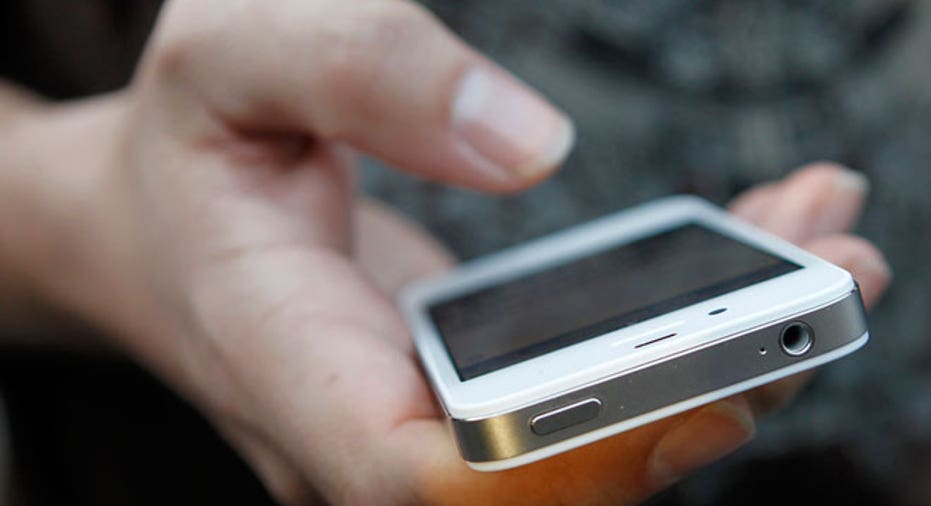Doctor Visits in the Palm of Your Hand

We can do pretty much everything online now: bank, shop, order food, chat with friends and family members around the globe, and one company is looking to add “visit the doctor” to the list.
Having a doctor exam or discussion via video conferencing has been around for some time now, but telehealth services company American Well Systems has developed a tool to allow patients to connect with their doctors via their mobile devices. The service costs $49 per use and allows users to find board-certified and licensed doctors on their smartphone or tablet that are available immediate for a live video visit.
“Over the years it’s been available to more and more patients through health insurance under the assumption they have an internet connection, camera and microphone," says Roy Schoenberg, chief executive of American Well Systems. “The world has changed. Everybody has the most prevalent video conferencing in their smart phone.”
Our society’s reliance on smartphones continues to grow as the devices become more advanced allowing us to do far more than just make phone calls. In fact, research has shown we are more inclined to turn around for a forgotten mobile phone than for a wallet. Advances in technology and the widespread adoption of mobile devices has made it possible for patients to have video conferences with doctors, nurse practitioners and even specialists from their mobile device wherever, whenever.
Many patients are looking for alternatives to the traditional office visit where they often spend time waiting. What’s more for uninsured patients, the $49 fee to get doctor advice tends to be much less than paying for an in-person visit.
“There is a need to increase access to care regardless of time or location,” says Teresa Myers, family physician in Copley, Ohio and one of the participating doctor’s for American Well’s app. “With increased access, we can deflect unnecessary utilization of things like the ER and decrease indirect and direct costs from having to sit in the waiting room or take off from work.”
The app is free and available in app marketplaces. Regardless of the time and day, a patient can pay $49 and have the app find and connect with a licensed and board certified doctor or nurse practitioner in their state. Patients can discuss any ailment, get examined via the phone or tablet’s video camera and even get a prescription for medicine. Clinical services are provided by the Online Care Group, which is a physician-owned primary and urgent care group focused on video telehealth. Experts say the typical telehealth patients seek doctor advice for issues such as cold, flu, sinusitis, urinary tract infections and pink eye.
There are limitations to the app. For example, doctors in only 44 states and the District of Columbia are part of the service and they can’t prescribe controlled substances. According to Dr. Peter Antall, medical director of Online Care Group, there are situations where the doctors will refer the patient to the emergency room or to see a physician in person.
For instance, he says a heart patient having chest pains or someone who is clearly dehydrated are cases where the app wouldn’t be the best form of treatment. Antall says about 15% of the patients are referred out, but the majority of them can be treated via the app or video conferencing. “A lot of people have some condition and are not sure if they need health care and don’t want to go to the ER.”
Just like when online banking, consumers who use their smartphones or mobile devices to communicate with a doctor should be aware of potential hacker threats. This app is brand new, but as it grows in popularity and more health-care providers create similar types of services, experts expect scammers to look to take advantage and exploit the personal information treasure trove.
Schoenberg says there is behind the scenes security like authentication and encryption similar to online banking to protect the patient’s data. The app is also complaint with all of the HIPA A rules and regulations surrounding the safety and privacy of their data. What’s more, users are required to create a code so that if the phone is stolen no one will be able to access the information.
Stil,l Antall stresses consumers use the service wisely. “We encourage people to be smart about where they are when sharing medical data,” says Antall, noting that it’s safer to do it from a secure Wi-Fi like in your home rather than a public Wi-Fi hot spot. “We always have to follow HIPAA regulations which are very stringent and carry large penalties. That’s the baseline we follow but we always go above and beyond that.”



















